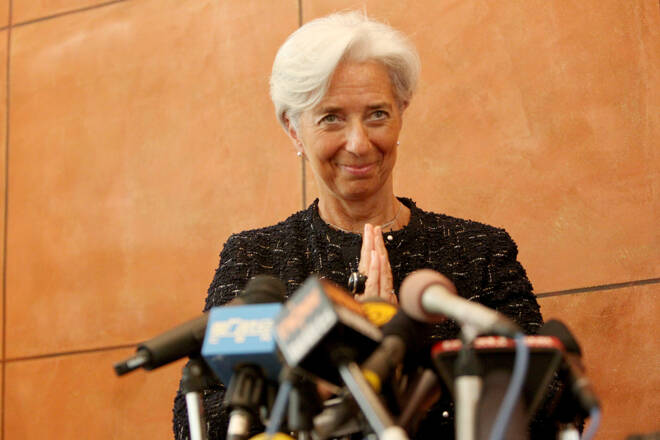Advertisement
Advertisement
ECB President Joins a Growing List Calling for Crypto Regulations
By:
ECB President Lagarde talked of the ability to capture illicit crypto fund flows into stablecoins and fiat in an informal press conference on Friday.
Key Insights:
- ECB President Lagarde clearly states that the ECB has the ways and means to prevent Russia from evading sanctions via crypto.
- Nonetheless, the ECB President calls for the swift implementation of MiCA.
- MiCA is an EU proposed regulatory framework for digital assets
Russia’s invasion of Ukraine has provided governments and central bankers further incentive to formulate a global crypto regulatory framework.
Despite calls from the Bank of England, India Prime Minister Modi, and even the IMF, progress towards a global framework has been slow. Last week, however, the U.S administration announced the imminent release of a White House Executive Order. The U.S President will task agencies with mitigating risks stemming from cryptos in the interest of national security.
In addition to exploring the rollout of a U.S issued central bank digital currency (CBDC), agencies will need to work with regulators globally to formulate a crypto regulatory framework.
ECB President Lagarde Calls for Crypto Regulations
On Friday, ECB President Christine Lagarde spoke at a live “Informal Meeting of Ministers for the Economy and Finance.”
Lagarde stated: “the ECB and all national central banks in the euro system will implement decisively and rigorously all the sanctions decided by the EU and the European governments.” Implementation would include supervision and cutting off liquidity by freezing assets and starving access to finance.
During the Q&A, Lagarde called on lawmakers to progress a proposed regulatory framework for digital assets known as Markets in Crypto Assets (MiCA). The ECB President noted that there are always criminal ways in which to circumvent a ban. For that very reason, Lagarde highlighted that it is critically important that MiCA is pushed through as quickly as possible to provide a regulatory framework.
Lagarde finished by saying: “It’s all very well to be in cryptos, but that’s not it. You have to move from cryptos to stablecoins (such as USDT) to eventually fiat currencies. Now there are ways, whether DLT or not, to actually pierce that veil and to make sure that criminal activity is actually pursued and properly dealt with.”
The ECB President’s press for MiCA and comments were in response to a question on Russia evading sanctions by using crypto.
Russia Sanctions Press the Need for Greater Crypto Oversight
Following the rollout of strong sanctions against Russia, governments now face the uphill battle of preventing the Russian government from circumventing sanctions. One area of concern amongst governments relates to the crypto market.
A lack of regulatory oversight currently allows Russia to mobilize funds through crypto exchanges and digital wallets. Last week, we reported on the surge in ransomware payments in 2021. Russian cybercriminals led the way.
The Russian government may also already have amassed a sizeable crypto war chest. North Korea reportedly had a crypto haul of as much as $400m by illicit means in 2021. In 2019, the United Nations “estimated that North Korea had amassed as much as $2bn from sophisticated cyber-attacks.”
Chainalyis Capabilities a Possible Solution
One platform that could provide governments with a framework to follow the crypto trail is Chainalysis. Bank of New York Mellon partnered with Chainalysis last week to benefit from its platform features.
The Chainalysis risk management software suite has three products of interest. These include Chainalysis KYT (Know Your Transaction), Kryptos, and Reactor. Chainalysis KYT monitors all crypto-asset transactions in real-time and can detect high-risk activity.
Supporting KYT is Reactor, which enables deeper investigation into suspicious activity, and Chainalysis Krypto. Chainalysis Krypto provides analysis on transaction volumes, counterparties, and benchmarking. Using Chainalysis, governments can get a snapshot of high-risk activity, volume, and counterparties.
From there, governments would need to step in and block the mobilization of funds. Crypto platforms would need to be cooperative for such a requirement. ECB President Lagarde suggests, however, that the ability to disrupt fund flows already exists.
About the Author
Bob Masonauthor
With over 28 years of experience in the financial industry, Bob has worked with various global rating agencies and multinational banks. Currently he is covering currencies, commodities, alternative asset classes and global equities, focusing mostly on European and Asian markets.
Did you find this article useful?
Latest news and analysis
Advertisement
